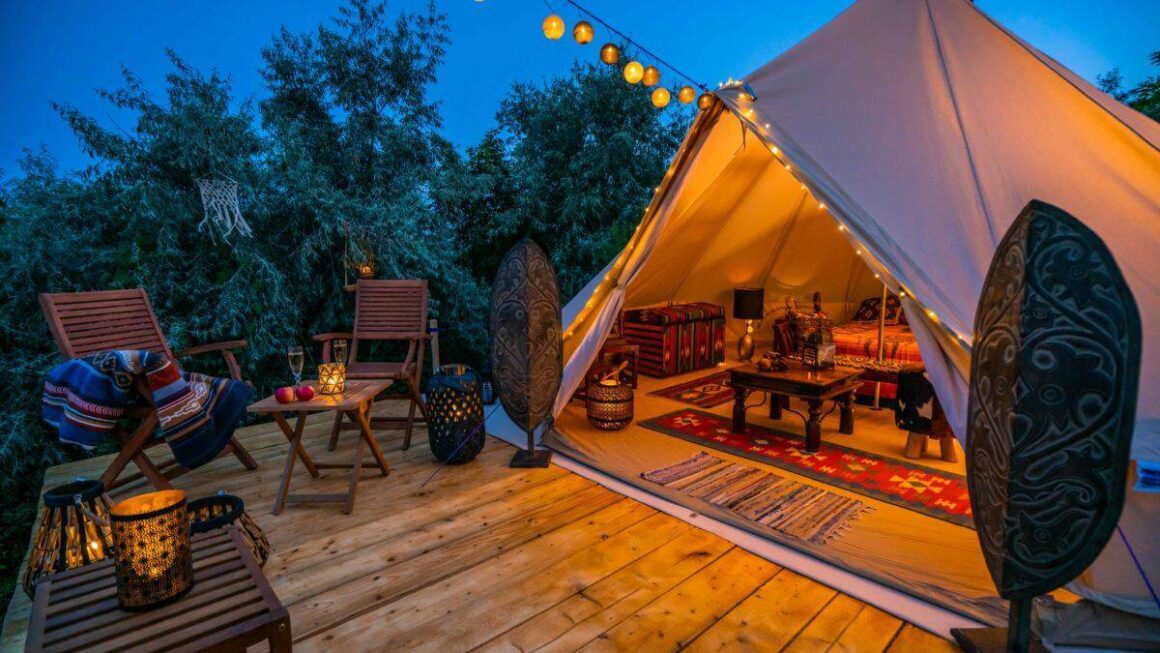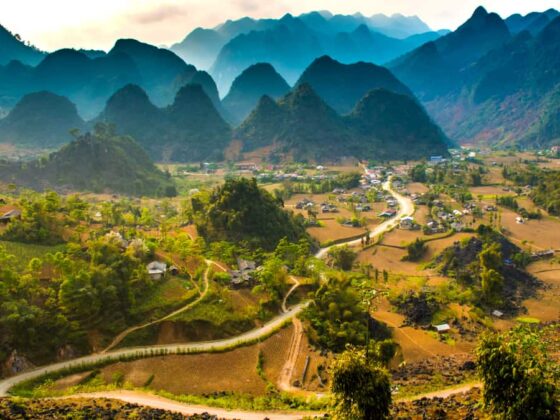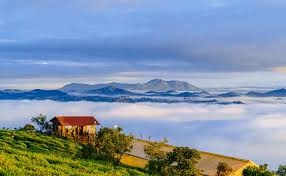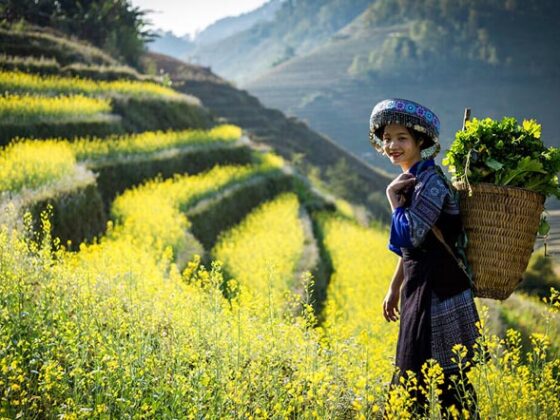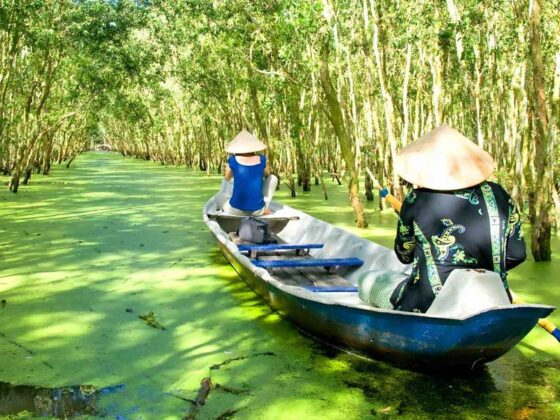Table of Contents Show
✍️ AI is summarizing:
Forget what you thought you knew about glamping. In Vietnam, a new kind of eco-conscious travel is emerging. Sustainable glamping in Vietnam is not just about luxurious tents; it’s a mindful movement that blends comfort with conservation.
These unique retreats are designed to leave a minimal footprint, support local communities, and reconnect you with nature. They prove that true luxury is about more than just amenities—it’s about the feeling of sleeping lightly on the land and waking up to a purpose-driven adventure.
Read more interesting posts here:
- Beyond the Boardroom: A Guide to Fun Outdoor Team Building Activities
- Why Moms Are Choosing Family Glamping in Vietnam Over Resorts?
- A Guide to Mu Cang Chai Ecotourism: Beyond the Rice Fields
What makes sustainable glamping in Vietnam so unique?
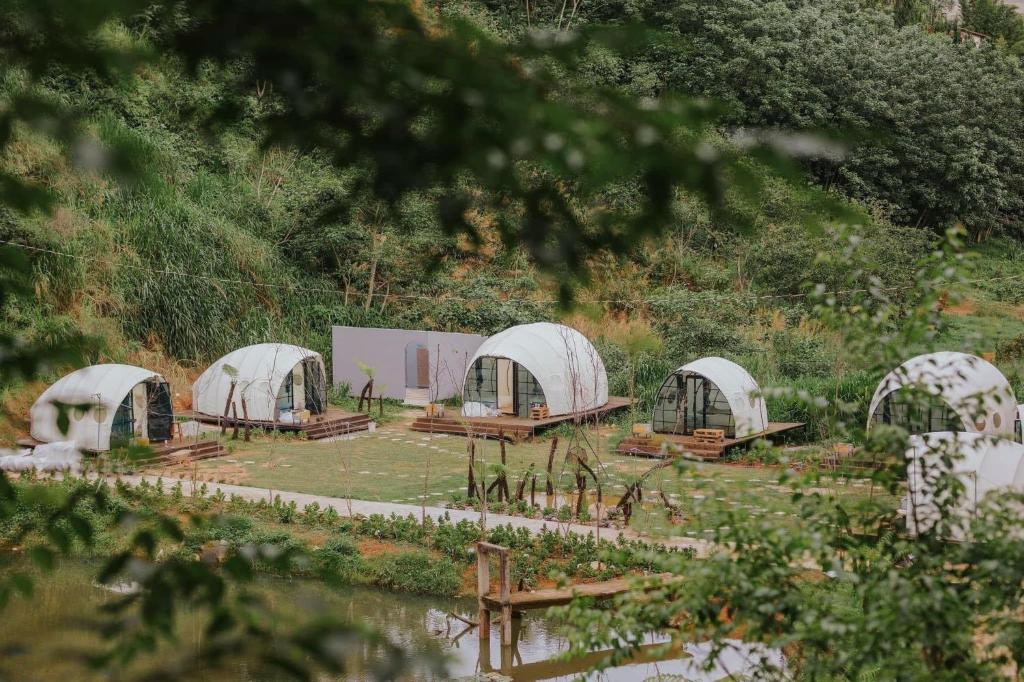
If you’ve ever dreamt of falling asleep to the hum of cicadas, waking up to mist curling off the treetops, and sipping morning tea from the comfort of a bamboo tent all without leaving a heavy footprint – Vietnam is quietly becoming one of Southeast Asia’s most inspiring places to do just that.
In recent years, glamping in Vietnam has evolved from novelty to movement, and the most exciting part? It’s not just about aesthetics. It’s about purpose. A growing number of local-run, eco-chic retreats are proving that comfort and sustainability don’t have to be opposites. This is the heart of sustainable glamping in Vietnam: it brings out the best in both.
Sleeping lightly on the land
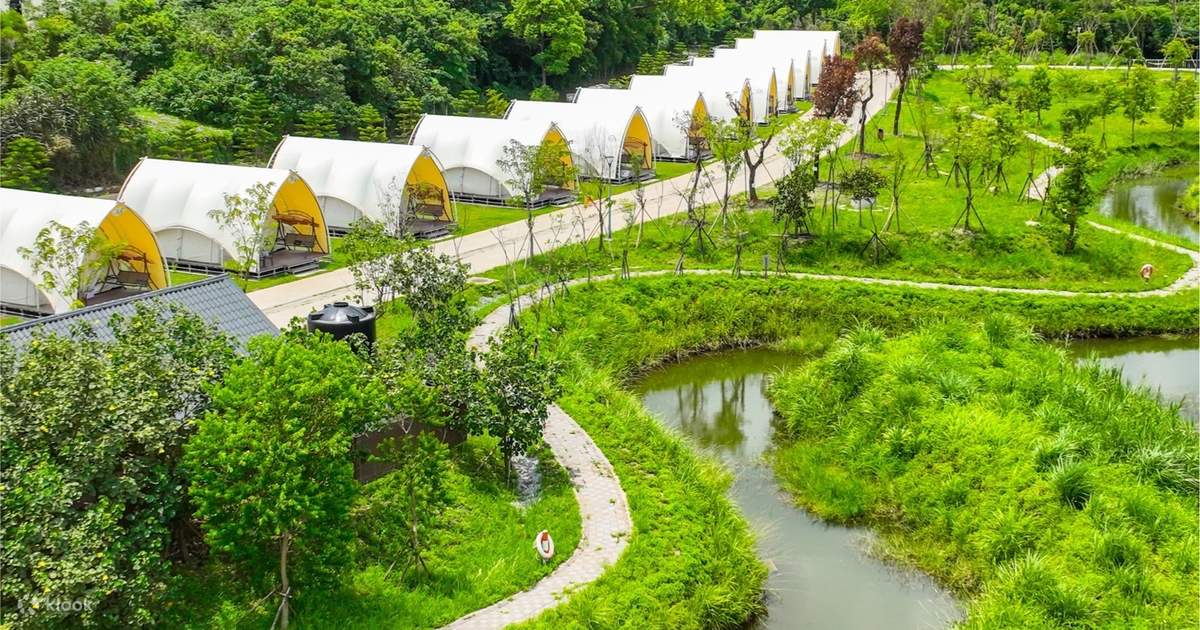
Nestled in the pine forests near Tà Năng or by the peaceful shores of Tuyền Lâm Lake, many of Vietnam’s newest glamping sites are excellent examples of sustainable glamping in Vietnam. They are built with low-impact materials—think woven bamboo walls, thatched roofing, reclaimed wood decks, and stone walkways that wind gently through native plants. These aren’t flashy developments dropped into nature; they’re thoughtful hideaways that blend in, breathe with the land, and tread gently.
At one site outside Đà Lạt, I stayed in a dome tent raised on stilts above the forest floor. No air-conditioning, no plastic. Just the natural insulation of pine shade and a handmade quilt to curl under. Rainwater was collected for garden use, composting bins were thoughtfully labeled, and showers were solar-heated. It felt good to be in a space where every small detail showed care—for guests, yes, but especially for the earth.
Why community is the heart of sustainable glamping in Vietnam
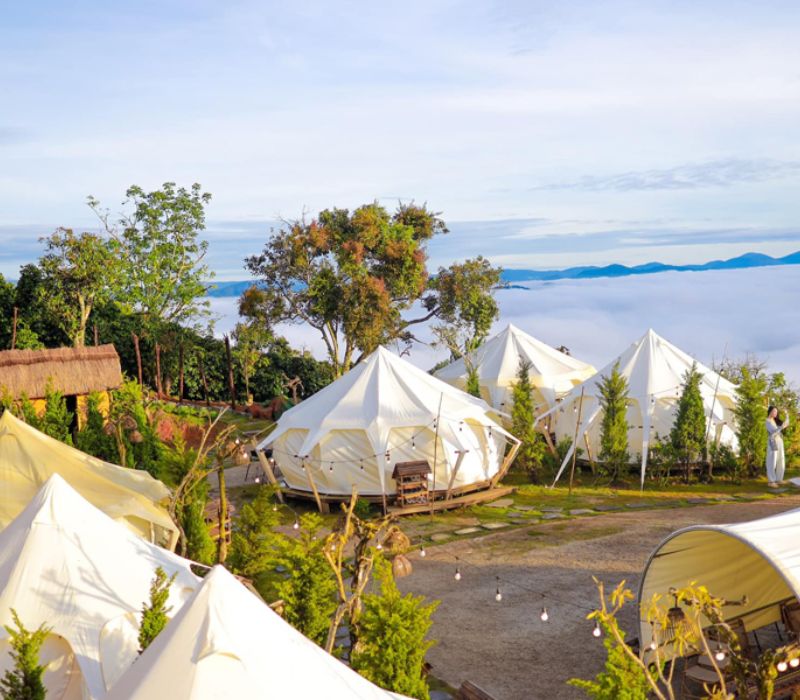
What really sets these places apart, though, isn’t just what they’re made from, it’s who makes them. Many sites offering sustainable glamping in Vietnam are run by local families or small cooperatives who grew up in these regions. Their knowledge of the land is generational. Their hospitality feels like coming home.
You’re not just booking a bed; you’re stepping into a story. Meals are often home-cooked, made from seasonal produce and herbs grown right onsite or sourced from neighboring farms. Activities might include a morning foraging walk or a workshop on traditional weaving. It’s not curated for Instagram—it’s curated for meaning.
The eco-chic design philosophy of sustainable glamping in Vietnam
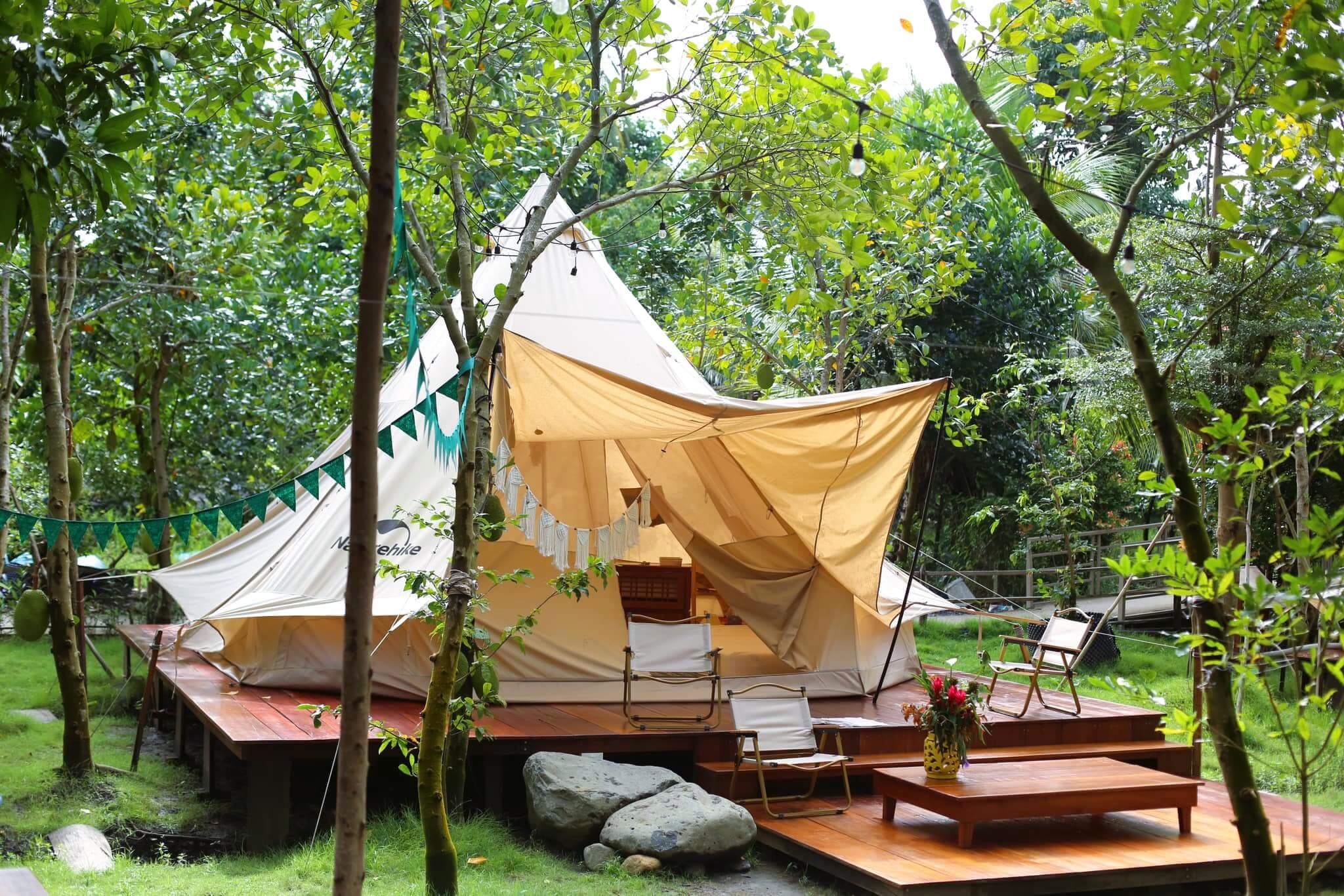
It’s easy to mistake eco-friendly for minimal, but don’t let the simplicity fool you; there’s beauty here, and often, deep elegance. The best sustainable glamping in Vietnam masters the art of doing more with less: open-air lounges with panoramic views, lantern-lit trails instead of floodlights, and thoughtful communal spaces where strangers swap travel stories by firelight.
Many sites also reinvest into local education, forest protection, or community projects, creating a loop of care that extends far beyond the tents themselves.
How to find and experience authentic sustainable glamping in Vietnam
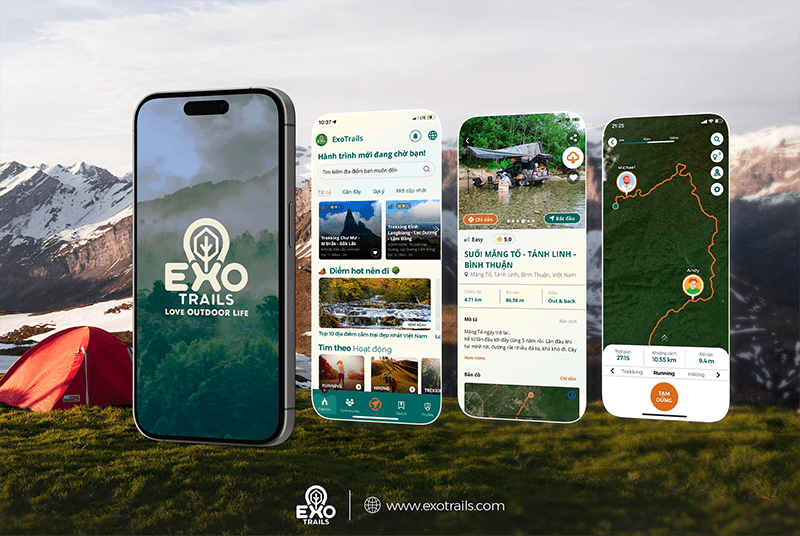
To make the most of these peaceful, planet-loving retreats, tools like the ExoTrails come in handy. It’s not just a map; it’s a companion. You can find off-grid walking paths, nearby eco-conscious cafés, or trails that wind through butterfly-filled meadows without disrupting the ecosystem. The app helps you travel with intention, not just convenience, allowing you to connect more deeply with the ethos of sustainable glamping in Vietnam.
Conclusion
In the end, sustainable glamping in Vietnam redefines luxury. It teaches us that true richness doesn’t come from excess, but from connection—to the earth, to local culture, and to ourselves. It’s a form of travel that nourishes the soul while nurturing the planet, proving that the most beautiful escapes are the ones that leave both you and the destination better off.
Ready to find your eco-chic escape? Join our community of explorers in the ExoTrails Facebook Group and follow the ExoTrails Fanpage for daily inspiration and trail tips!
FAQs
What is sustainable glamping?
It’s a form of luxury camping that prioritizes environmental responsibility through low-impact construction, conservation, and support for local communities.
Where can I find eco-friendly accommodation in Vietnam?
Look in areas known for their natural beauty and commitment to conservation, such as the regions around Da Lat, Lam Dong, Pu Luong, and Mai Chau.
How does glamping support local communities?
Many sustainable glamping sites are locally owned, employ local staff, source food from nearby farms, and reinvest profits into community projects.
What makes a travel destination “eco-chic”?
It’s the stylish and elegant integration of sustainable practices and design, proving that eco-friendly choices can also be beautiful and comfortable.
How can I travel more responsibly in Vietnam?
Choose locally-owned accommodations, respect cultural norms, minimize your waste, and use apps like ExoTrails to find and support eco-conscious businesses.

